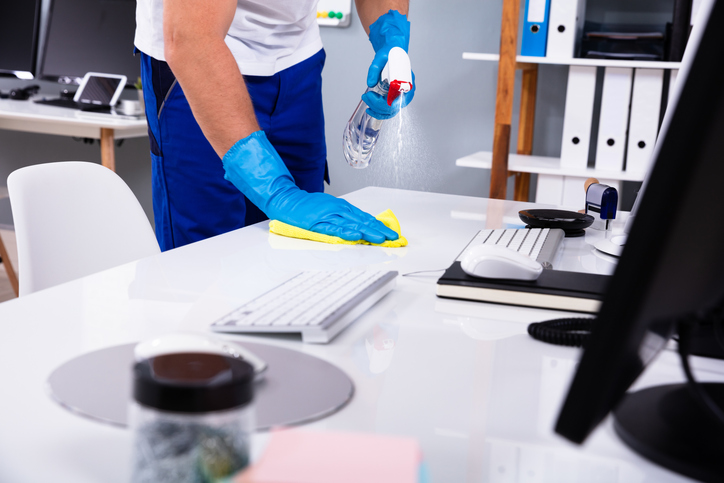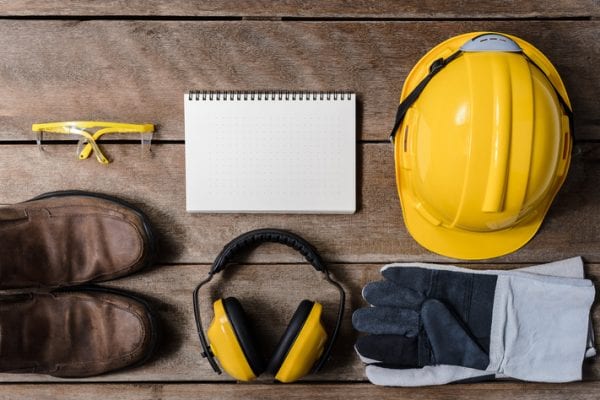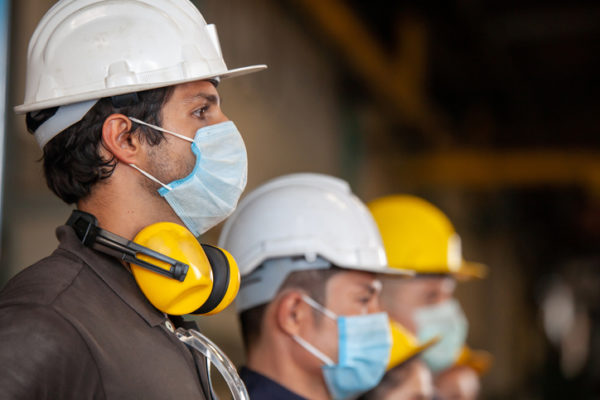As businesses across the United States have gradually reopened over the past few weeks, it has become increasingly clear that we will not be going “back to normal” anytime soon.
Recommendations from the Centers for Disease Control, Environmental Protection Agency, and various industry publications have outlined new precautions for every environment, from offices to restaurants and retail.
Most of these recommendations focus on hygiene, distancing, and sick policies. But for building owners, there’s another component that has the potential to have a huge impact on the safety of building occupants and visitors: The built environment itself.
How the Built Environment Impacts Infection Rates
Several months into the pandemic, we are beginning to understand more about how this virus spreads. We know, for instance, that it is far more virulent in indoor environments than in outdoor environments. This has to do with shared air space and proximity.
We also know that some built environments can make the problem worse. For instance, by circulating air from one part of the building into another, increasing the risk that a sick person in one place might infect healthy people in another.
This places a unique burden on building owners and managers to ensure that their buildings are not contributing to the problem, and that they are taking all reasonable measures to ensure the safety of their occupants.
Although infectious diseases are not generally mentioned in lease contracts, most landlords do have a legal duty to ensure their buildings provide a safe and healthy environment, in addition to the felt obligation to take good care of tenants.
Here are 4 ways building owners and managers can ensure that their built environments help protect occupants.
1. Review your Built Environment’s ventilation system
Except in medical environments, most ventilation systems were not built with infectious diseases in mind. They are most often built for efficiency, rather than safety. This means that very often, they pull in minimal air from outside, and recirculate air, often throughout the common building areas and sometimes the entire building.
This can mean that an infectious person in one part of the building can cause disease for someone in another part. Additionally, poorly maintained systems can fail to adequately filter air before recirculating it.
Review your ventilation system with the following steps:
- Identify intake locations and schematics to see where air is coming from, and where it is discharging. Reroute where practical to ensure that each area of your building receives fresh air.
- Consider increasing intake of fresh air. This can reduce efficiency of heating and cooling, but is important in ensuring that viral loads don’t build up inside the building and can reduce the likelihood of infection.
- Perform routine maintenance, including filter changes to ensure that your system isn’t unduly harboring and spreading disease. Consider installing higher filtration filters, such as electrostatic or HEPA, that may provide some protective value against viruses.
2. Install partitions and physical barriers where possible and practical
The open office plan is no longer the best structure for office buildings, and, likewise, open floor plans for restaurants and retail may need to be restructured. Partitions between separate areas can help prevent the spread of COVID by reducing the spread of globules and droplets among people in adjacent areas.
In offices, consider installing cubicles or clear partitions. Restaurants and retail may want to consider creating barriers between aisles and tables to improve patron safety. Partitions between clerks and customers are already becoming widespread. In the factory and other environments, likewise, partitions between workstations can make the environment safer.
3. Improve access to hygiene stations
Bathroom and hand-washing facilities have not traditionally been built with infectious transmission in mind. In the traditional office environment, employees often must walk among many other employees to reach a restroom, and in other environments hygiene stations are often even less easily available.
Building owners and managers should now be thinking about how to make hygiene more accessible, whether by providing hand-washing stations at regular intervals or by spreading restroom facilities out through the environment and providing more hand-washing stations per person.
It’s also important to think about the route that individuals must take in order to reach hand-washing, and reduce the number of people they will be exposed to. Automatic sinks and soap dispensers should be provided to reduce the number of surfaces it’s necessary to touch.
Additionally, air dryers may no longer be a good choice for hand drying. Forced air can cause viruses to spread more quickly to anyone sharing the environment during their use. Building managers should consider other options.
4. Reduce occupancy in Built Environment
One of the most important and challenging measures for making the built environment safer is simply reducing the number of people occupying the space at any given time.
Many companies are doing this by increasing the number of workers who work from home, and asking employees to reserve time slots in the office, much like restaurant reservations, and setting limits on the number of employees who can be in the office at the same time. Likewise, restaurants and retail are often reducing the number of guests and shoppers who can be present at a given time. In the factory environment, this can be accomplished by changing the way shifts are worked, and reducing the number of employees in the work environment at one time.
In all cases, this may have the impact of reducing efficiency, but by improving safety can save the time and money associated with sick workers, in addition to being the right thing to do.
At GLE, we have been consulting with owners and managers about the health and safety of their built environments for more than 30 years. We would love to work with you to help you protect your occupants during this time. Contact us today to learn more.






